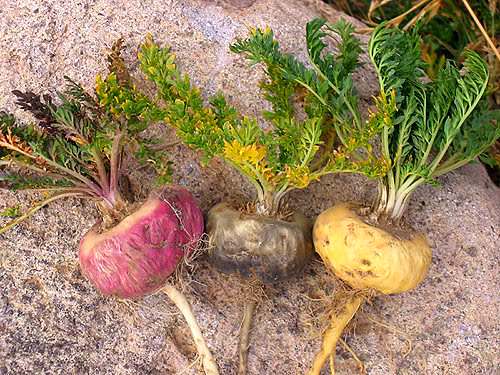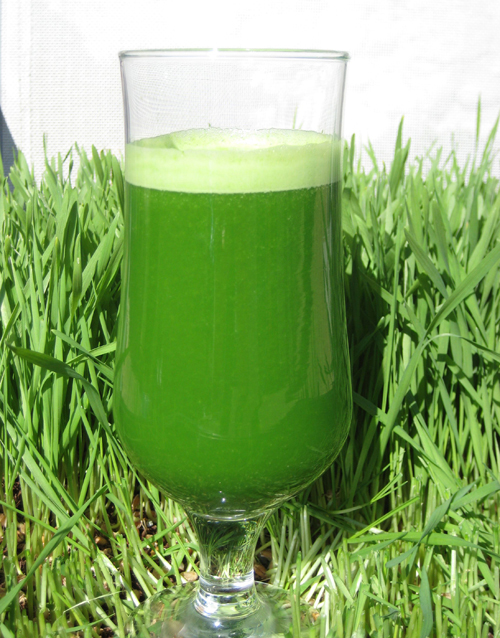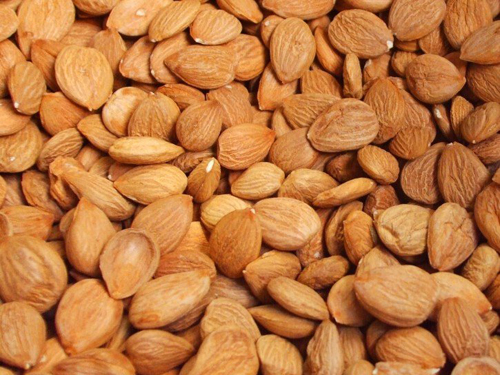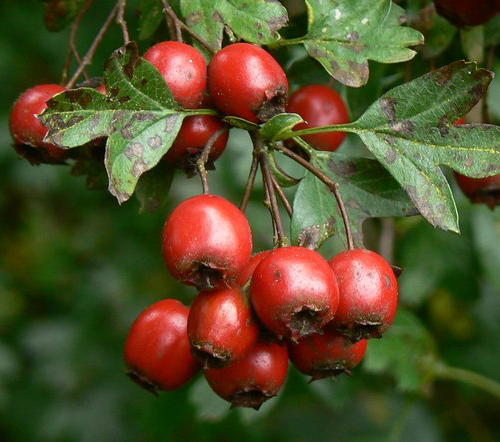(NaturalNews) Are apricot seeds a source for a natural substance that kills cancer cells without destroying the cancer victim’s health and wealth? The essential ingredient has been called laetrile or vitamin B 17. If there is any merit to it, why is this information being suppressed? Why are people who have been cured or have cured others being censured and imprisoned? Could be there is something to the claims.
Keep in mind that the cancer industry world wide is estimated at a 200 billion dollar a year industry. There are many in various associated positions within that industry who would be without a job if that cash flow dried up suddenly with the news that there are cheaper, less harmful, and more efficacious remedies available. Big Pharmacy would virtually vanish.
What is B17, or Laetrile Anyway?
In 1952, a biochemist named Dr. Ernst Krebb, Jr. in San Francisco decided that cancer was a metabolic reaction to a poor diet, and a missing nutrient from modern man’s diet could be the key to overcoming cancer. His research led to a compound found in over 1200 edible plants throughout nature. That compound is amagdylin,
Amagdylin is found with the highest concentration and necessary enzymes in apricot seed kernels. A primitive tribe, the Hunzas, were known to consume large amounts of apricot seed kernels. The hard pit had to be broken to get into the soft kernels. There was no incidence of cancer with them at all, ever. And they had long, healthy life spans. Laetrile was created by simply extracting amagdylin from the soft apricot kernels, purifying it and putting it into a concentrated form.
Amagdylin is a nitrioloside. Nitriolisides are difficult to categorize since they are in foods but not foods themselves. As a nitrioloside, amagdylin resembled the B complex structures, so Dr. Krebb called it B17 since by that time 16 types of B vitamins had been isolated.
Dr. Krebb injected himself with laetrile to ensure there would be no toxic side effects. He conducted further lab animal and culture experiments to conclude that laetrile would be effective in the treatment of cancer. By the way, the FDA standard for drug safety is known as LD 50, LD stands for lethal dose, and the 50 is the percentage threshold of lab animals poisoned to death by the drug tested. As long as the percentage killed is under 50%, FDA will approve it!
Since laetrile is derived directly from a food substance in nature and not chemically developed in a laboratory, it is impossible to patent. And of course it’s not toxic. In other words, just as with all natural healing substances, Big Pharma and the AMA can’t make a fortune from the substance and from the remedies for the long term side effects. There have been several testimonies from cancer victims who cured themselves by chewing large quantities of the apricot seeds alone.
The seeds are more available to consumers now than laetrile because in 1971 the FDA banned laetrile. Laetrile is difficult, but not impossible, to purchase. The seeds are actually the soft almond shaped, bitter tasting kernels from inside the pits. A few users prefer extracting those soft kernels from the pits themselves. But the soft kernels are available and inexpensive.
So How Does It Work?
Amagdylin contains four substances. Two are glucose; one is benzaldyhide, and one is cyanide. Yes, cyanide and benzaldyhide are poisons if they are released or freed as pure molecules and not bound within other molecular formations. Many foods containing cyanide are safe because the cyanide remains bound and locked as part of another molecule and therefore cannot cause harm.
There is even an enzyme in normal cells to catch any free cyanide molecules and to render them harmless by combining them with sulfur. That enzyme is rhodanese, which catalyzes the reaction and binds any free cyanide to sulfur. By binding the cyanide to sulfur, it is converted to a cyanate which is a neutral substance. Then it is easily passed through the urine with no harm to the normal cells.
But cancer cells are not normal. They contain an enzyme that other cells do not share, beta-glucosidase. This enzyme, virtually exclusive to cancer cells, is considered the “unlocking enzyme” for amagdylin molecules. It releases both the benzaldyhide and the cyanide, creating a toxic synergy beyond their uncombined sum. This is what the cancer cell’s beta-glucosidase enzyme does to self destruct cancer cells.
Amagdylin or laetrile in conjunction with the protective enzymes in healthy cells and the unlocking enzymes in cancer cells is thus able to destroy cancer cells without jeopardizing healthy cells. Chemotherapy, on the other hand, kills a lot of other cells and diminishes one’s immune system while killing an undetermined amount of cancer cells.
Those cancer cells tend to return elsewhere because the patient’s general health was reduced from the pervasive chemo toxins. The cancer industry has declared the bench mark for curing cancer as being cancer free for 5 years. It’s estimated that of those who undergo the AMA big three for curing cancer, surgery, radiation, and chemotherapy, no more than 3% make the 5 year cancer free mark. Besides the treatments’ debilitating effects, they are much more expensive!
But for someone with cancer, it takes a considerable amount of daily B17 consumption to enable the amagdylin to reach the cancer cells with beta-glucosidase. That’s because some of the amagdylin molecules will be neutralized by the normal cells containing rhodanese.
Many practitioners who use laetrile have an 85% cure rate among cancer victims who did not undergo much of the standard cut, burn, and poison that is main-stream – while the cure rate for those who come to laetrile therapy as a last resort after all that conventional medicine could only have a 15% recovery rate. There is a clinic in Mexico that claims a 100 percent cure rate!
The Medical Mafia’s Suppression
Since around 1920, practitioners of alternative cancer therapies and remedies and their messengers have been marginalized, harassed, imprisoned, and even killed. Federal agencies have been used to bring about bogus charges or IRS tax liens that are enforced by US Marshals the way Dr. Gary Glum was hassled for even writing books on Essiac Tea. See Natural News article “Essiac Tea: A Cancer Cure Big Pharma Doesn’t Want You To Know About.” http://www.naturalnews.com/026928_cancer_Essiac_Tea_health.html.
A young Brooklyn man, Jason Vale, was imprisoned because he refused to stop telling others on TV and in lectures how he cured himself of cancer using those nasty apricot pit kernels! Jason is a more recent public example of the Medical Mafia’s grip on the legal system regarding B17. Laetrile, which is non toxic, was banned by the FDA in 1971.
Shortly after the 1971 laetrile ban, a practicing physician in San Francisco, Dr. John Richardson, who had been using laetrile successfully on cancer patients, came to his friend G. Edward Griffin, a published investigative journalist, and asked Griffin if he could write up something to help him and others continue using laetrile on their cancer patients.
G. Edward Griffin’s research evolved into his groundbreaking book, World Without Cancer. This book not only explained laetrile and chronicled several cancer cures, but Griffin’s investigative nose led him down the rabbit hole and into the underbelly of the cancer industry’s efforts at keeping alternative cancer cures from the light of day. That’s how he discovered that the Sloane-Kettering Cancer Institute had buried documentation from scientists’ research, which proved laetrile was “highly effective” at curing cancer.
Griffin received those documents himself from a Dr. Ralph Moss, who had been told to cover up that evidence and claim that laetrile was worthless. He refused and left his position as PR manager with Sloane-Kettering. Since that time in 1977, Dr. Ralph Moss has gone on to write or edit several books on cancer cure options. It’s always encouraging to see an insider come out! Someone else filled Dr. Moss’s vacant position and lied the lies about laetrile that filled the medical journals.
And what about those medical journals? Lately, the most prestigious New England Journal of Medicine dropped its standard of not allowing articles contributed to the journal from anyone who was receiving money from Big Pharma, as long as it’s less than 10 grand annually. If they didn’t drop that standard, there wouldn’t be enough articles to fill the journal! Of course, most medical journals are glossy ad forums for Big Pharma anyway.
Both G. Edward Griffin with World Without Cancer and Phillip Day in his book Cancer: Why We’re Still Dying to Know the Truth, make it very clear that the cancer industry does not really want a cure. Even non-profit organizations get millions in donations from the brainwashed, huddled masses along with funding for promoting Big Pharma. A non-profit organization can and will have key people working for 6 figure plus annual salaries, by the way.
Doctors mostly do as they are trained and told; medical journals contain false reports and lies. Cancer foundations have breast cancer months or whatever as PR to get people into the disease industry’s money mill as early as possible, and at the top, there is Big Pharma. It’s all about money and career. Not about public health and “The War on Cancer.”
So far in mainstream medicine, it’s been a losing battle with more getting cancer than ever. Around 1 out of 3 is destined to get cancer these days, and more are dying from cancer after conventional treatments. Talk about pandemics! All this with lots of cash going their way, enabling some to live a lush lifestyle and others hanging on to their comfy, secure jobs at the expense of our health.
Meanwhile, too many true humanitarian doctors and herbalists and writers concerned with the truth wind up being treated like criminals or nut cases, sometimes with their lives destroyed. That’s tragic. And so is the fact that millions suffer and die while being conditioned against using effective and less painless procedures.
Laetrile Treatment
There are many success stories from people using just laetrile or apricot pit kernels. The usual recommendation for prevention is around 5 to 7 over the course of a day. For actual cancer cases use 2 to 3 times that. Some say one kernel for every 10 lbs of body weight. For maintenance after a cure, go back to 5 to 7 per day.
Some laetrile therapists have patients use vitamin B15 tablets and digestive enzymes such as papaya’s papain and pineapple’s bromalene. Too many apricot pit kernels can create nausea or dizziness. There are no recorded deaths or disabilities from the apricot seeds or laetrile, however. Although some success has been recorded with patients undergoing conventional therapy and using laetrile, it’s not recommended. Eventually most of those who combine the two get off the chemo or die anyway.
There are many practitioners and writers who recommend you combine other alternative cancer therapies while taking laetrile or using the apricot pits – especially if you go for it alone at home. It should be obvious to Natural News readers that a foundation of healthy food and less stress is necessary. A fundamental lifestyle change has to be a part of any permanent cancer cure. In addition, a little eclectic mix and match with other alternative therapies seems like a good approach.
For example, Gerson’s cancer cure therapy’s juicing protocol with the right type of juicer and using coffee enemas to detox the liver could be added with laetrile use. It’s hard to go wrong with that healthy combination. See Natural News article on the Gerson Therapy for more details here:
http://www.naturalnews.com/027004_cancer_coffee_health.html
Do your own research by starting with the source links below this article. Those sources are for more than showing the author has done his homework. The author intends for you to use them as a springboard for your own research. Why waste your money and health on toxic remedies when so much is available as alternatives for far less money and negative side effects?
Sources:
Excellent interview of G. Edward Griffin on laetrile and the cancer industry
http://www.youtube.com/watch?v=ZFnP9sU1KW4
An excellent overview of different cancer cure options
http://www.1cure4allcancer.com/the_ultimate_one_page_cancer_report.ht…
A vast, indexed and categorized free source of cancer cure options with details you can use – It’s the free online bible of cancer cure options
http://www.cancertutor.com/index.html
Information on apricot seeds with more details
http://www.detailshere.com/cancerapricots.htm
Vitamin B17 – contains information on supplements to include with B17 and a list of foods with B17, also a few caveats on using B17
http://www.detailshere.com/cancerb17.htm
Author Phillip Day’s blog
http://www.credence.org/
About the author
Paul Fassa is dedicated to warning others about the current corruption of food and medicine and guiding others toward a direction for better health with no restrictions on health freedom. You can visit his blog at http://healthmaven.blogspot.com
Learn more: http://www.naturalnews.com/027088_cancer_laetrile_cure.html#ixzz2MxI9K4MM




